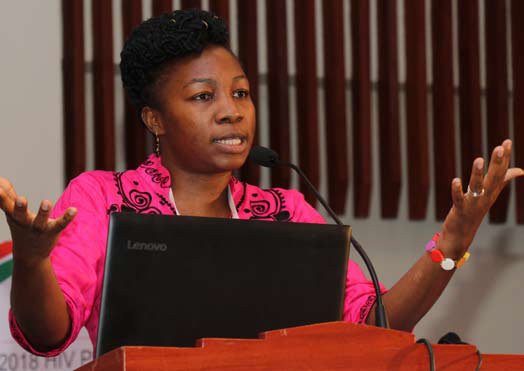As curtains fell on what has been a landmark scientific conference on the prevention, care and treatment of HIV, it was clear that there are many strides made in the right direction.
Notably, the national adult HIV prevalence has been on a steady decline in the last seven years.
According to the National AIDS and STI Control Programme (NASCOP), “annual new infections are less than a third of what they were in 1993” when the epidemic was at its strongest.
There are now better antiretroviral regimens that are accessible and consequently, more people on treatment inspiring experts to declare that the country may well be on its last mile towards achieving the 95-95-95 dream.
This is essentially a fast track plan to halt the spread of HIV by 2020 and to eventually end the epidemic by 2030.
Initially dubbed the 90-90-90 Aids eradication strategy, the goal is to have 90 percent of people living with HIV tested, 90 percent of those diagnosed with HIV put on treatment and 90 percent of those on treatment achieving durable viral suppression.
Based on advances in the treatment and care of HIV, experts are now aiming for 95-95-95.
Nonetheless, experts are alarmed that this success story has been clouded by failure to prevent new infections among young women 15 to 24 years.
“When you talk about new HIV infections, these are people who are negative today and HIV positive tomorrow.
Young people account for about half of these new HIV infections and this is a worrying statistic,” said Anthony Chazara, LVCT Health and Youth Programme.
Dr Lillian Njagi from Kenyatta National Hospital concurs: “More than half of all new HIV infections occurred among adolescents and young people aged 15 to 24 years which is a sharp rise from 29 percent in 2013.”
According to NASCOP’s latest estimates, 1.5 million people were living with HIV with youths accounting for 280,000 of these numbers.
Speaking at the conference, Dr Njagi was particularly concerned that young women continue to be disproportionally affected by HIV.
Across Africa, HIV infections among young women are double or triple those of their male peers. “In Kenya, young women are almost twice as likely to acquire HIV compared to young men,” she emphasized.
Due to their vulnerability to HIV, young women 15 to 24 years account for 33 percent of the total number of new HIV infections. In comparison, NASCOP statistics show that young men account for an estimated 16 percent of the new HIV infections.
Experts attribute this high HIV prevalence to gender inequalities, violence against women, limited access to health care, lack of access to education and jobs, and health systems that do not address the needs of young people. During the entire period of the conference, experts belaboured the fact that the face of HIV has significantly changed.
 People living with HIV are no longer as sickly as they used to be. It is therefore now possible for a HIV positive individual with a very high viral load and therefore highly infectious to appear healthy.
People living with HIV are no longer as sickly as they used to be. It is therefore now possible for a HIV positive individual with a very high viral load and therefore highly infectious to appear healthy.
This has shaped the attitudes that young women have as well as their own perceptions of being at risk of infections.
Surveys have shown that young women are still more fearful of an unplanned pregnancy than HIV. But there are other factors that have served as obstacles to the prevention of HIV among young women. Experts said
that biology does not help. Teenage girls’ immature genital tract is more prone to abrasions during sex, opening entry points for the virus.
Experts were also quick to clarify that besides sex, the age of the male partner is a defining factor. “The trends are showing that HIV prevalence is high among women aged 15 to 24 and among men aged 35 to 45. This is because of the intergenerational relationships,” Chazara expounded.
The age of the young woman herself is also a factor. Women who had their first sexual encounter before the age of 15 years faced twice the risk of getting infected with HIV.
Importantly, experts belabored the point that interventions are in the pipeline to address the needs of young people in the prevention, care and treatment of HIV.
According to Dr Irene Mukui of NASCOP, “There is a lot of discussion and focus on the youth to figure out how to prevent new HIV infections, to ensure those infected are on treatment and that they have good treatment outcomes once they start taking antiretroviral drugs (ARVs).” With experts drumming support on increasing awareness and knowledge of HIV prevention among young people, these efforts are bearing fruits.
Nonetheless, more young men than women have demonstrated adequate knowledge of HIV prevention.
In the Kenya Health and Demographic Survey (KDHS) 2008, an estimated 48 percent of young women and 55 percent of young men “demonstrated adequate knowledge of HIV prevention compared to 73 percent of young women and 82 percent of young men in 2014.”
There is still no consensus on teaching young people about HIV and sexual health. This remains a debatable controversial issue with the most recent KDHS 2014 finding that an estimated 40 percent of adults were “against educating young people about condoms” for fear that it might be taken as encouragement for them to have sex.
Such fears and controversies notwithstanding, the figures have spoken and raised the alarm. Without urgent and young people tailored interventions, the HIV prevalence among young people will become the epidemic.

Leave A Comment